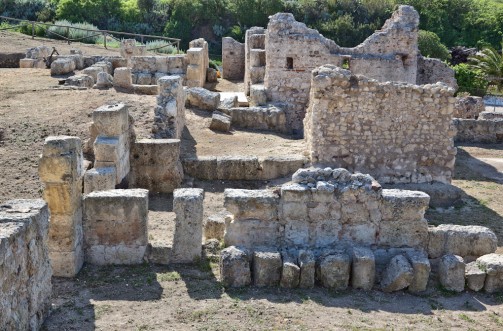The spa complex, named after the archaeologist who brought it to light in the 1960s, extends into the eastern boundary of the archaeological area, separated by the substantial earthworks on the hillside carried out for the construction of the railway line and now reconnected via a footbridge. Because of the caesura element, it is not easy to perceive the vastness of the area, which, together with the large complex of the Central Baths, constituted from the 3rd century AD a large and very busy public space for meeting and discussion. Based on recent archaeological investigations, the mighty thermal phase with a public character, recognized in the several contiguous rooms inherent in thermal practices, overlaps and obliterates an older private residential neighborhood. The latter, dating from the first century AD, features Domus richly decorated with mosaic coverings and marble inlays and equipped with a private spa facility. Among the finds, the excavation returned a marble fountain element depicting a Satyr, displayed at the Turritan Antiquarium. This finding emphasizes, with its intrinsic meanings, the spread that the cult of Dionysus, to which the satyr character refers, had in the city of Turris Libisonis, accentuating its character as a port city open to the Mediterranean world.









